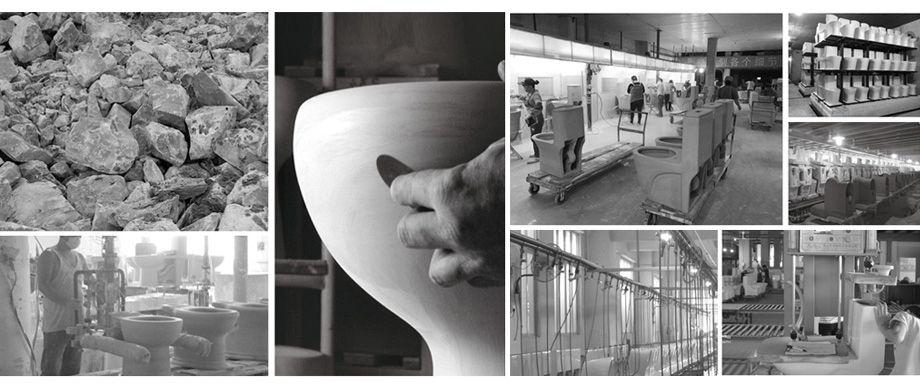|

1. Ceramic raw materials
Divided into porcelain clay and glaze, the raw materials are basically the same, but the ratio of raw materials is different.
Its main components: feldspar, quartz, zinc oxide, zirconia, aluminum powder, magnesium oxide, colorants.
K2O Si O2 ZnO ZrO2 AI2O3 MgO
Clay: A type of clay used to produce pottery and porcelain.
Porcelain: A finished product that is completely vitrified into porcelain during high-temperature firing.
Ceramic: A finished product that is not completely vitrified in high temperature firing.
The difference between porcelain and pottery: raw material formula, product and water rate, firing temperature.
Slurry: The raw material used for forming grouting.
Glaze: The raw material used for semi-finished glaze.
Production process: ball milling, filtration, iron removal, pool storage.
Ball milling and sieving must reach 325 mesh international.
2. mold
Gypsum mold for forming grouting.
Material: Gypsum powder.
Features: fast water absorption, short solidification time, easy repair and low price.
Grouting times: 80 times - 100 times.
Production process: 3D drawing design, original model artificial sculpture, each mold is made of resin as a master mold, and the sub-mold produced by the master mold is used for forming grouting.
3. molding perfusion
The slurry is used to form a semi-finished product in the plaster mold.
At least two models of each molded product are combined.
Molding method: single-sided suction, double-sided suction.
Production process: grouting, slurrying, demoulding, splicing and punching, repairing.
4. spray glaze
The glaze is evenly sprayed on the semi-finished product.
Spray glaze method: machine hand spray glaze, artificial spray glaze.
5. firing
A semi-finished product that has been sprayed into a glaze and formed in a crucible after a certain period of time has been heated at a high temperature.
Firing shrinkage rate: no more than 1.15.
Firing time: 13 hours - 15 hours.
Firing temperature: 1210 ° C - 1280 ° C.
Firing process: pre-tropical zone, firing zone, cooling zone.
Various types of furnaces: shuttle rafts, tunnel rafts, roller rafts.
6. inspection
Development room: slurry: fineness, specific gravity (water content), shrinkage, strength, bending resistance, flow, thixotropic.
Glaze: flow, thixotropic, fineness, specific gravity, color difference, high waterfall flow, drying time, glaze adaptability (in order to control thermal stability).
Chromatic aberration: The tile on the glaze is produced and compared with the American standard swatch, and the imported color difference meter is used.
Color: Visual inspection.
|
|
